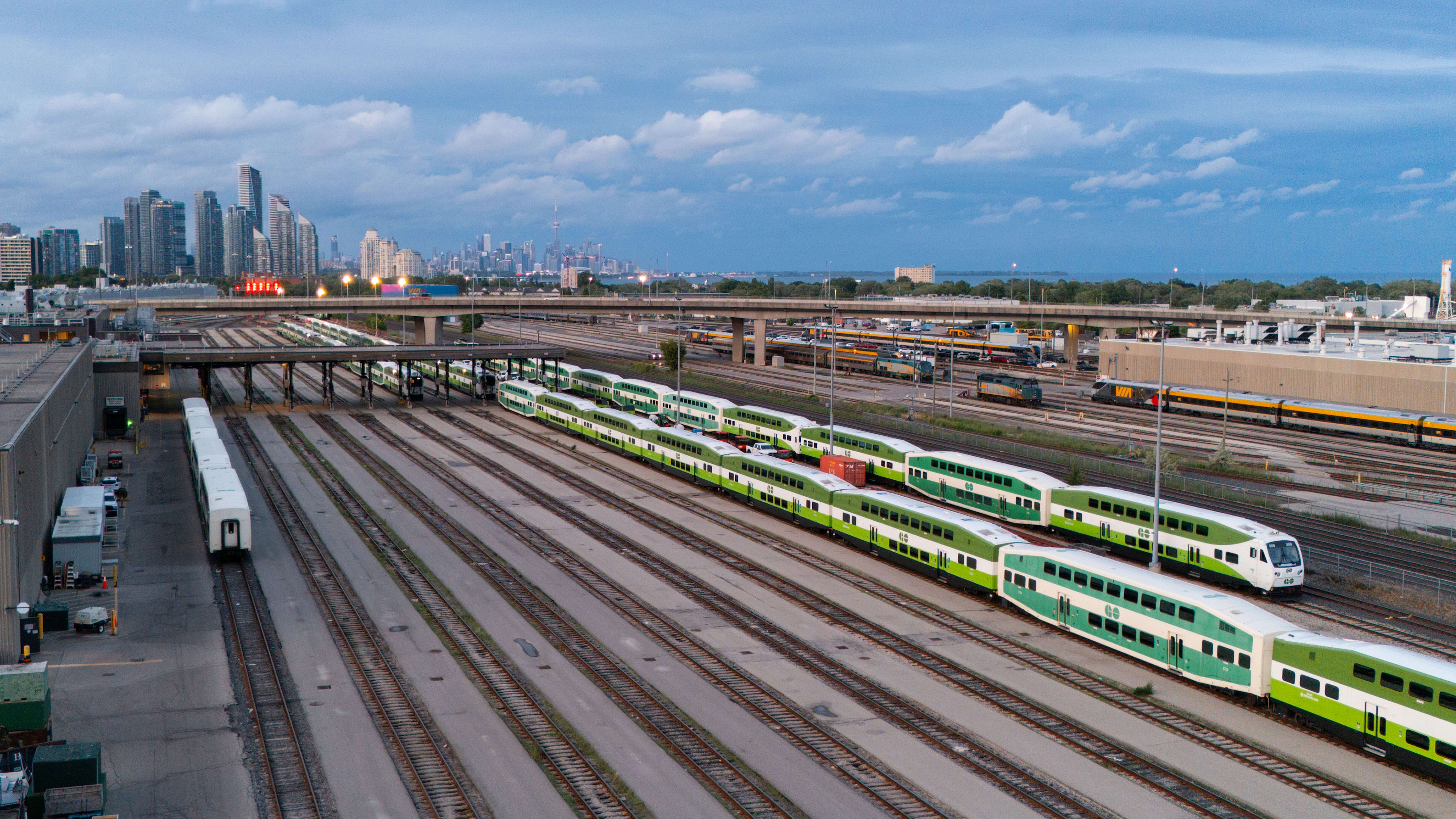Share
Where do GO trains sleep at night?
Learn more about where our trains rest, refuel and reset between trips.
Jul 29, 2025
GO trains don’t just run — they rest, refuel and reset between trips. That happens at layover yards: essential but often overlooked parts of the GO transit system.
And with more service coming to the Kitchener Line, Metrolinx is building a new facility to meet the demand.
“To operate daily service, Metrolinx currently stores about 68 train sets overnight, 47 of which are in outlying layovers,” says Adrian Gurau, senior manager of service design and network operations planning. “The rest are stored at our major maintenance hubs, Willowbrook (near Mimico GO) and Whitby Rail Maintenance Facility.”
Willowbrook Rail Maintenance Facility. (Metrolinx photo)
What is a rail layover yard?
Layover yards are where trains go between trips — to park, power down, get cleaned and refueled.
Currently, Metrolinx has 14 layover yards, some of which double as bus garages, and two maintenance facilities across the Greater Toronto and Hamilton Area. Busy rail lines, such as Lakeshore West and Kitchener, need multiple yards. Others, like Milton and Richmond Hill, make do with just one.
Our layovers serve different schedules. Downtown yards like Bathurst North and Don Yards are bustling during the weekday, storing trains following the morning peak period, keeping trains close to Union Station and ready for afternoon trips out of the station. Other outlying layovers, like Lewis Road Layover (near Hamilton) and the Barrie Layover are busier overnight in preparation for morning services.
Why layover facilities matter
Keeping trains ready to roll isn’t as simple as just turning them off for the night, especially in winter, when onboard systems such as heating, lighting and electronics all need to stay powered.
Without layovers equipped with wayside power, a system that provides power when the train is stationary, they would have to idle overnight, an environmentally unfriendly and inefficient solution.
“Ideally you don’t want that diesel engine running all night,” Gurau says. “Wayside power lets us shut the engine off while keeping the systems powered.”
A new layover at Heritage Road
The new Heritage Road Layover, now under construction near Brampton, is being built to support the growing Kitchener Line. It’s bigger, more capable, and better located than existing facilities nearby.
"It gives us the ability to store longer trains with up to 12 cars, which we can’t do at the nearby Georgetown Layover," Gurau says. "That’s a big deal for the Kitchener Line, which is experiencing the most rapid ridership growth in the system."
It’s not just about parking more trains, but also about doing more with them while they’re parked. Heritage Road will offer fueling infrastructure to reduce the need for midday trips to maintenance yards, toilet tank servicing for consistent onboard cleanliness, and light cleaning and minor maintenance to keep trains in service longer and avoid a detour to a central facility.
An artist’s rendering of the future Heritage Road Layover. (Metrolinx image)
Strategic location, better service
With rail layover facilities, proximity matters. Heritage Road is strategically located near Mount Pleasant GO which will see increased service levels as part of GO Expansion.
"That helps preserve track capacity for service and reduces unnecessary mileage," Gurau says. “It also positions trains right where they need to be for peak periods."
This proximity also means less “deadheading” (moving empty trains), fewer delays and more reliable service for customers.
Once complete, Heritage Road Layover will be one of the most modern and capable facilities in the GO network.
by Stacey Kenny Metrolinx corporate communications manager
